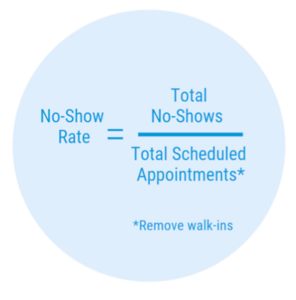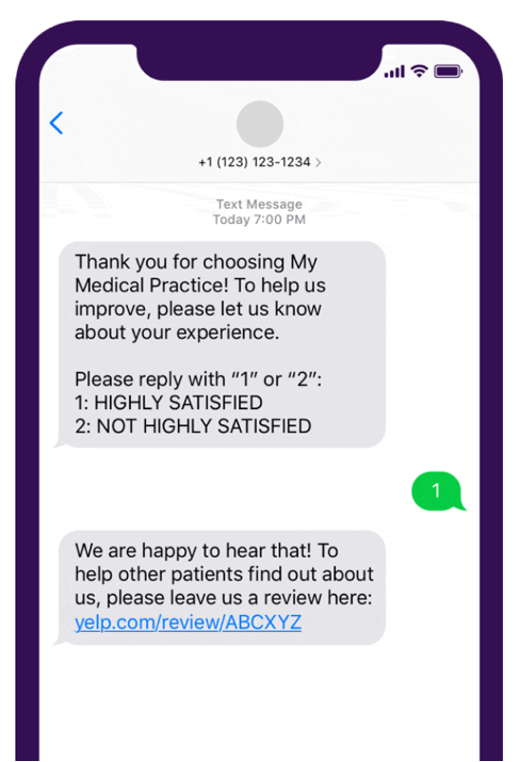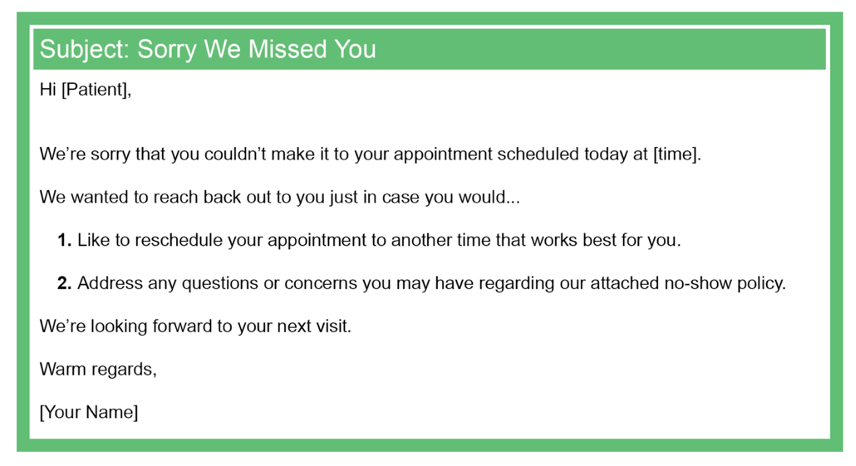- Home
- Learn
- Healthcare
- 14 Best Ways To Reduce Patient No-shows
HEALTHCARE
14 Best Ways To Reduce Patient No-shows
Contents
No-shows take a heavy toll on healthcare organizations. Each missed appointment costs about $150–$200 per patient, resulting in an estimated $150 billion in losses each year. Beyond the financial hit, patient no-shows also waste valuable staff time.
The good news? There are proven ways to turn things around. By putting the right strategies and systems in place, providers can change the story.
In fact, studies reveal, some healthcare groups have cut no-shows by up to 70% by employing these strategies.
What are they? Let’s find out.
But first…
A patient “no-show” is an individual who never arrived for a scheduled appointment and gave no notice.
The no-show rate metric can be calculated by dividing total no-shows by total scheduled appointments.
An accurate no-show rate can help managers evaluate lost ROI and benchmark success toward reclaiming revenue.

Most no-shows happen because patients forget or can’t easily reschedule. Automated reminders via text, email, or voice can dramatically cut those missed visits. The key is timing: send one a few days before, another 24 hours ahead, and a quick same-day nudge.
Also, give patients an easy way to confirm, reschedule, or cancel right from this message. That way, empty slots can be easily refilled instead of being wasted.
But if we are being honest, sending these reminders manually is neither desirable nor scalable. This is where a HIPAA-compliant healthcare CRM like LeadSquared can help. It automates this process across communication channels while safeguarding patient data—freeing your team to focus on care rather than the mundane, repetitive admin work.
This sample SMS text reminder from Practice-Web does a good job of illustrating best practices.

Practice-Web reminds John Doe of his upcoming dental appointment by providing a specific date and time and including several response options (confirm, change, cancel). The text is strategically timed, arriving just as John’s workday concludes.
This email template by Etactics is also a good example of a simple yet effective appointment reminder.

Etactics addresses the patient by name and confirms the specific doctor, date, and time for the appointment. The text also includes the provider’s address for ease of access.
Put text messaging at the forefront of your patient engagement strategy. Studies show that using SMS can boost appointment attendance by up to 67%.
Text messages aren’t just for reminders—they’re a quick, effective way to:

Klara Assistant’s sample text solicits feedback on patient experience. Klara thanks the patient for their business, includes a simple way to offer feedback, and a link to leave a longer review.
Patients differ in how they engage with you. Some ignore their emails; others may not receive calls. Using multiple channels like text, email, phone, or WhatsApp increases the chance of your messages being seen and hence keeping no-shows down.
A HIPAA-compliant CRM like LeadSquared also makes multi-channel communication easy. With it you can:
Timing matters too. When planning your patient engagement strategy, consider how far in advance to send messages, prior communications, and the action you want the patient to take to maximize engagement.
When a patient misses a visit, don’t let it slip away. A simple, friendly message—like checking in and offering a new appointment—can turn a no-show into a rescheduled visit.
Automating these follow-ups with a HIPAA-compliant tool like LeadSquared saves staff time and makes it easy to include a one-click reschedule link.
For example, check out this sample follow-up email by Etactics.

Etactics conveys an empathetic and non-accusatory tone with “we’re sorry” and “looking forward to your next visit,” as well as a “warm regards” conclusion. The sample email also directs patients to the no-show policy and offers a convenient way to reschedule.
Help patients stay on track by setting up proactive scheduling practices. Simple steps, like asking them to arrive a few minutes early, check in online before their appointment, or confirm attendance via their preferred channel, can reduce late arrivals and no-shows.
You can encourage appointment attendance by offering patients the option to pre-pay their portion of the visit. Some practices even provide small discounts on co-pays or deductibles paid in advance, giving patients an added incentive to show up on time.
Long waits can frustrate patients and increase the risk of no-shows. Studies show that most patients are willing to see another provider within the same practice if it means shorter wait times and better scheduling flexibility.
Aim to keep visits aligned with the national average—around 18 minutes or less. While patients wait, engage them with helpful reading materials, on-site surveys, or tablets for reviewing health information. Shorter waits and thoughtful engagement show patients you value their time and improve overall attendance.
Missed appointments can also stem from transportation barriers. Offering solutions like ride-share partnerships, shuttle services, or clear transit guidance can help ensure patients arrive on time. Even providing simple directions or parking details can make a big difference in attendance.
Hennepin Health’s partnership with Lyft illustrates a potential ROI opportunity for healthcare providers.
In 2018, Hennepin partnered with Lyft to implement a 12-month pilot rideshare program. The program resulted in a 10% reduction in no-shows—from 31 to 22.5 percent—and a savings of $270,000.
Businesswire
Patients are more likely to show up when they feel seen and valued. Personalized communication, friendly check-ins, and attention to their individual needs strengthen trust and reduce no-shows.
Gestures, like acknowledging health milestones or sharing relevant tips—reinforce the connection and encourage appointment adherence. Strong relationships not only reduce no-shows but also improve patient satisfaction and long-term loyalty.
Last-minute cancellations can leave gaps in your schedule—but a telehealth waitlist helps fill them quickly. Build an “on-call” list by confirming patients’ availability during each visit, so you know who can fill the appointment slot a new one opens.
An active telehealth waitlist helps:
A clear, written no-show and cancellation policy sets expectations for patients and encourages accountability. When patients understand the rules and consequences, they’re more likely to honor appointments, helping reduce last-minute gaps and lost revenue.
Distribute your policy through your website, appointment reminders, waiting room displays, or hand-outs. Keep it short and specific, covering what counts as a no-show, the required notice period, and any penalties.
Check out UNC Hospitals Neurology Clinic’s policy for an example.
UNC defines “no-show” and provides different levels with “same day cancellation” and “late arrival.” Different no-show levels are assigned different time parameters.

UNC continues by defining a general policy of 24 hours’ notification for cancellations and establishing the clinic’s expectations around patient communication.
When patients grasp why their visits matter, they’re more likely to show up and stay engaged. Explain how regular check-ups catch issues early, keep treatments on track, and support long-term wellness.
Reinforce this message during visits, appointment reminders, or onboarding materials. Informed patients feel more in control of their health, which builds trust and encourages consistent attendance.
Not everyone can make a 9-to-5 visit. Offering early morning, evening, or weekend slots makes it easier for patients with work or family commitments to keep appointments.
Gather patient input, through surveys or feedback forms, to find out which hours work best. A healthcare CRM like LeadSquared can help you here through its digital feedback forms feature which patients can fill at the comfort of their homes.
The more convenient the schedule, the higher the likelihood patients will show up.
While digital reminders are highly effective, physical reminders like appointment cards or magnets can help patients who don’t always check their phones or email. A card or magnet with appointment details and your contact information gives them a tangible cue they can keep visible at home, reinforcing the reminder daily.
Tracking patient behavior is key to reducing no-shows. Analytics and reporting tools for healthcare can let you see patterns, such as which appointment types or times have the highest cancellations or missed visits.
With this insight, your team can take targeted actions, like adjusting scheduling, sending extra reminders, or offering alternative appointment options. Tools like LeadSquared Healthcare CRM automate report generation, and trend monitoring, helping you take informed decisions to reduce no-shows.
Patient no-shows disrupt care and cost your practice time and revenue. As we saw, tackling them takes a mix of clear policies and tools that keep both patients and your practice in sync. From flexible scheduling to clear, timely communication, every step plays a role in helping you connect with patients better and improve their attendance. Tools like LeadSquared’s Healthcare CRM bring it all together, letting you automate, personalize, and streamline the entire appointment journey.
Want to see how it works in action? Book a free demo today.
There are a few common culprits—patients forget, run into scheduling conflicts, feel better and decide not to show, or don’t see the value in the visit. Sometimes, long wait times or a complicated rescheduling process can also push them to skip. Addressing these points proactively goes a long way in reducing no-shows.
Yes, they make a noticeable difference. Sending timely reminders through a patient’s preferred channel, whether text, WhatsApp, or email, helps jog their memory and gives them an easy way to confirm, reschedule, or ask questions.
The key is to keep messages clear, friendly, and consistent—enough to engage patients without feeling pushy.
A simple and effective approach is to send one reminder about 48 hours before the appointment and a second one 24 hours prior. This gives patients enough time to confirm, reschedule, or notify you if they can’t make it.
Make it easy and stress-free for patients to cancel. Offer multiple options such as text, patient portal, or phone call. Remind them that cancelling in advance helps keep the schedule running smoothly for everyone. Policies are most effective when combined with kindness and flexibility.
It depends on your patients and local regulations. Some practices use a small, clearly communicated fee while others treat it more as a deterrent than a source of revenue. The key is transparency. Make sure patients understand the policy before they schedule their appointment.
Absolutely. Digital tools like LeadSquared’s healthcare CRM let patients choose the best appointment time for them, make changes easily, and get automatic reminders for their visit. It removes friction from the process and hence helps improve attendance rates.
LeadSquared Healthcare CRM lets you send automated reminders, track confirmations or reschedules, and communicate with patients from one place. This, as we saw, reduce missed appointments while giving your team more for patient care.
Very. Your front-desk or call center team plays a huge role in how patients experience your practice. When they’re trained to handle rescheduling, answer questions, and reinforce policies with empathy, patients are more likely to stay engaged and show up.
Yes. LeadSquared Healthcare CRM can integrate with EHR systems, billing software, and other practice management tools. This allows your team to keep all patient and appointment information connected, reduce manual data entry, and streamline workflows across different systems.
Overbooking might seem like a quick fix, but it can create long wait times, frustrated patients, and stressed staff if most patients do show up. Instead, focus on proactive scheduling, reminders, and patient engagement to reduce no-shows while keeping your schedule manageable.
Preventing missed appointments starts with reminding patients consistently and clearly about their upcoming appointments. Sending texts, emails, or calls a few days before the session keeps appointments top of mind for patients.
You can use a behavioral healthcare CRM like LeadSquared to automate these reminders. In the reminder, make sure to include the relevant information (such as the appointment date, therapist, and any prep instructions) and give patients a way to confirm, reschedule, or cancel easily.
Making scheduling flexible is also key. Patients can often avoid missing sessions if they can book or adjust appointments online or through a mobile app. You can also try to offer virtual sessions to help those who face transportation or timing issues.
Using a behavioral health CRM, such as LeadSquared, practices can track attendance patterns, follow up with at-risk patients, and send timely reminders or check-ins.
Finally, understanding why patients miss sessions helps. Collecting feedback or sending gentle follow-up messages after a missed session can guide adjustments to scheduling, reminders, or support.